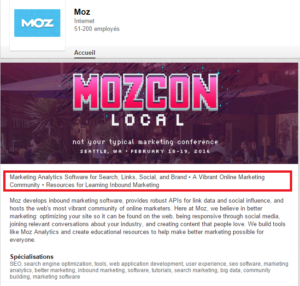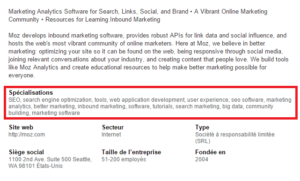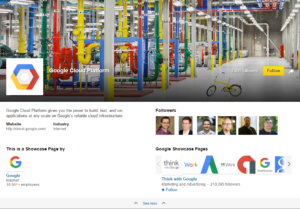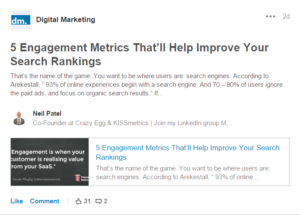LinkedIn is the leading professional social media. That well known platform for its marketing opportunities also offers a great SEO potential for brands. Did you know it was possible to increase your rankings using LinkedIn?
LinkedIn is now counting more 396 millions users and has developed a strategy based on qualitative content. Moreover, Google seems to give more credits to the website by indexing its results in its SERPs.
Simple optimizations on your profile can give you an extra SEO boost. Let’s focus on 3 techniques to improve your SEO with LinkedIn.
First, identify your keywords and key phrases
Your onpage optimization is highly important but what about your external one? Develop your external presence to improve your SEO. That optimization begins with keyword research related to your activity. And this is also true for LinkedIn. It is important to determine long-tail keywords to densify your profile and rank on a specific niche.
The Google Keyword Planner tool is optimal when it comes to keyword research. Connect to your AdWords, then pick the Keyword Planner. It is thus able to suggest keywords and to identify the most relevant ones. After you have decided which ones to use, don’t forget to integrate them to your LinkedIn profile. Let’s see where and how to use them.
1# Optimize your company LinkedIn page
There are different ways to optimize your company LinkedIn page for search engines. In the description area, first insert your most important keywords to define your company and separate them with dots or asterisks. That is a quick sum up of your expertise. But don’t abuse of it, limit that list to 100 characters.

Let’s focus on the main description part, your marketing pitch! That activity description must be appealing, unique and integrate your keywords and key phrases. Avoid keywords suroptimization. Remember that the first person you want to seduce is your visitors and not Google. Then be natural and compelling. Moreover, try to insert different keywords from your website but try to enrich that lexical field with new ones. That description aims to develop your content and your ranking opportunities.
LinkedIn also offers a ‘Specialisation’ section allowing you to add 256 more characters. Take that chance to decline your most performing keywords.

Optimizing your profile do not only allows LinkedIn to identify you thanks to your keywords but also to rank you higher compare to partially completed profiles.
Be sure to insert your keywords in any new publications. Finally, don’t forget to add your URL, even if it will be a ‘NoFollow’ one. That kind of link helps building a natural link profile to Google and still gives your a qualitative referral traffic.
[Case Study] Handling multiple site audits
2# Take advantage of your Showcase Pages
Showcase Company Pages are extensions of your main company pages. They allow you to push forward a specific product or service. It represents another opportunity to deploy your long-tail keywords and synonyms. Those pages work like the classic ones, you can be followed and highlight them.
You can also include your keywords in your showcase page name, in the description (limited to 200 characters) and in your publications. Don’t forget to link to the main page.

3# Don’t neglect your group publications
Adhesion to LinkedIn groups is limited to 50 ones. So why don’t you take advantages of that opportunity to point out your expertise and attract prospect on your website? Find groups similar to your interests because investing your time in those ones can be a winning solution. Actually, Google seems to index these contents in its results.
The key is to respect each group guidelines if you don’t want to get your publications in the pending section. Then, integrate your keywords in your title and your other keywords in the description.

Engage the conversation! Be compelling and pique the audience curiosity! Don’t hesitate to respond to comments and to take part to conversations. Google loves contents that generate engagement and thus social signals.


Linkedin is powerful tool and one of the best social networks out there . I found in article some things what I need to work on in my personal profile and I get some new useful ideas.